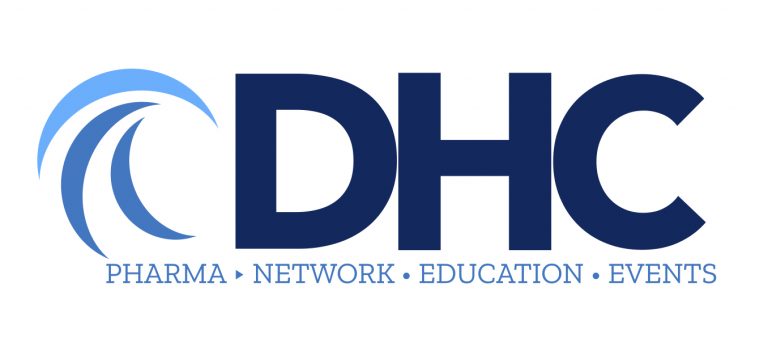Article: Chrome, Firefox, and Safari Browser Changes: The Impact and Why It Matters - Jan 2020
By DHC
Have You Heard “ITP” Mentioned Over the Past Year?
Regardless, these changes to how the big three browsers – Chrome, Firefox and Safari – address data privacy in online advertising are happening now and stand to have a profound impact on the way the industry markets its products going forward.

Thought Leaders Weigh in
Brendan McHenry, Vice President of Sales and DTC Strategy at Healthline, and Jennifer Loga, Healthline’s Sr. Director of Media, Strategy, and Analytics led a webinar discussion this week, providing an update to a presentation Brendan gave at the DHC’s West Coast Summit, held at Genentech in November 2019. *Yes, an update to a presentation that happened only a couple months ago is already necessary – that is how fast and furious these new advertising and privacy protocols are evolving.
Sometime in mid-2019 warning bells started going off for the analytics team at Healthline when they saw an unexpected and quite significant decrease in the delivery of retargeting impressions with one of their campaigns. When Jennifer peeled this back further, they noticed that this wasn’t an anomaly, rather more than 300 active campaigns were expressing the same phenomenon. Why?
Apple ITP Rollouts
June 2018 - 2019
To summarize, by the end of 2019, Apple and Mozilla are completely blocking all cross-site tracking of 3rd party cookies and limiting the lifespan of 1st party cookies (to 24 hours for Safari).

Fast Forward to January 2020
What Does this Mean?
The impact is already being felt, and with the addition of Google’s Privacy Sandbox rollout (though the details of how and when and what it will entail have not yet been released), could have significant impact on pretty much the entire digital advertising spectrum from media strategy, optimization on strategies, user reach, frequency metrics, audience modeling and targeting (ala programmatic), post-site tracking (can’t be tied back to Safari), and view-through conversions all the way to more advanced analytics and measurements.
Ultimately, ITP limits advertisers’ ability to measure and execute digital ad campaigns, and KPIs that have been developed around these various measures will need to evolve too. As Jennifer mentions, “performance could appear much more volatile”. Questions like “why is my online ad campaign not working on Safari” have become harder to answer. And in many instances, might not even be the right question– because after all, its contribution is not measurable. As Brendan notes, “there are many instances of large chunks of data not being accounted for” thus having a real impact on the outcome and one’s ability to tie to specific offline actions or generally understand the ROI of an online campaign, much less the ability to segment deeper into Android versus Apple reach and relevance.
What is a Marketer to Do?
- First, acknowledge that these changes are having an impact of the way ad campaigns are run. Estimate the potential impact of tracking protection features by reviewing how much of your site traffic comes from Safari or Firefox.
- Second, understand your cookie reliance. Jennifer recommends that marketers reduce reliance on third-party cookies instead opting for more 1st party data, relying on contextual placements and change measurement from cookie-based to panel based. Push partners to fix the measurement gap that ITP has created.
- Third, push for accountability and transparency. Advertisers with significant numbers of Safari visitors need to work with their vendors and analytics experts to determine the impact on all marketing efforts. Advertisers should be skeptical of vendors that claim to have workarounds. As ITP’s multiple iterations have shown, browser updates to ITP protocols have already rendered previous workarounds ineffective.
- Fourth, Rethink benchmarks, KPIs and goals.
Where Does this Leave Us?
Is there a silver lining? Well, as Jennifer stated in the webinar, these changes should ultimately be a good thing for the health industry, leading to more robust metrics. Brendan followed by pointing to some changes that Healthline has already implemented, such as relying more on survey-based data and “old school” data collection techniques. Expect the contextually targeted campaigns of ten years ago to make a comeback, and advertisers to continue seeking workarounds.
Bottomline, while there is still a lot we don’t know about where these new data privacy measures will lead, one thing we do know is that ITP is only headed in one direction, at least in the short term and that is towards increased consumer control, greater transparency and more restrictions on cookies. This will lead to new opportunities, some of which were addressed during the Q&A at the end of the webinar. The full webinar presentation is available on demand now.
Experts POV on Data Privacy Trends

MeltMedia – Clare Kirlin, Marketing Director
In healthcare, the implications of user data collection are massive. Despite legal mandates and corporate pledges, investigations have revealed the unauthorized collection and sale of protected health information (PHI) and personally identifying information (PII) by both publishers and advertisers — enabled by third-party cookies. Here are five things you can do to prepare for the inevitable change ahead: shift your metrics, invest in contextual targeting, build first party strategies, lean on vendors, and consider it a win. Read More →

Underscore Marketing – Adam Armendinger, Manager, Media
Personalized data might become more volatile to handle, so completely anonymized data might be the way to proceed in the future. Companies will need to start figuring out the data landscape to determine how data can be used to help their businesses operate. Otherwise there could be serious repercussions from flawed business management to legal punishment. The data landscape is changing, and future change is also inevitable, but the analysis of data can still be used to drive efficient business decisions if done correctly. Read More →

eHealthcare Solutions - Madison Crane, Digital Marketing
While some marketers and agencies see an opportunity to rebuild the digital advertising ecosystem off of a more secure infrastructure, others are anxious about losing their foundational tracking mechanism. While many advertisers and publishers are excited for this new opportunity to improve the digital world, many are not so thrilled. One reason for this lack of enthusiasm is due to the fact that many advertisers and publishers are dependent on third-party cookies and they fear that this will greatly affect their ad revenue. Read More →

Crossix – Jeremy Mittler, VP, Industry Solutions
Looking forward, we believe a phase-out of third-party cookies presents an opportunity for the industry to upgrade to better, privacy-safe solutions. In our 15-year company history, we have a proven track record of innovation and we have continued to improve our solutions as digital advertising technology changes and evolves. Our measurement solutions evolved from research panels, expanding to publisher-based panels, to cookies, eventually adding mobile and IP-based tracking. Read More →

RxEdge – Rob Blazek, Senior Vice President, Networks and Analytics
Try a patient-centric approach with education and transparency. Take the time to explain why patient information is important and what benefits it provides to patients. When it’s necessary, don’t hesitate in sharing the steps taken to de-identify data and keep it secure. The more people understand how data collection and usage can benefit their overall health, the more likely they are to willingly share it. Read More →

PatientPoint - Charlie Greenberg, SVP, Campaign Quality and Compliance
Upholding principles of data privacy does not handicap generating and analyzing big data. The key to doing data and privacy right is building trust with customers. This means being transparent about how data is used to construct target audiences and media publisher offerings as well as how marketers employ and repurpose audience data. Read More →
